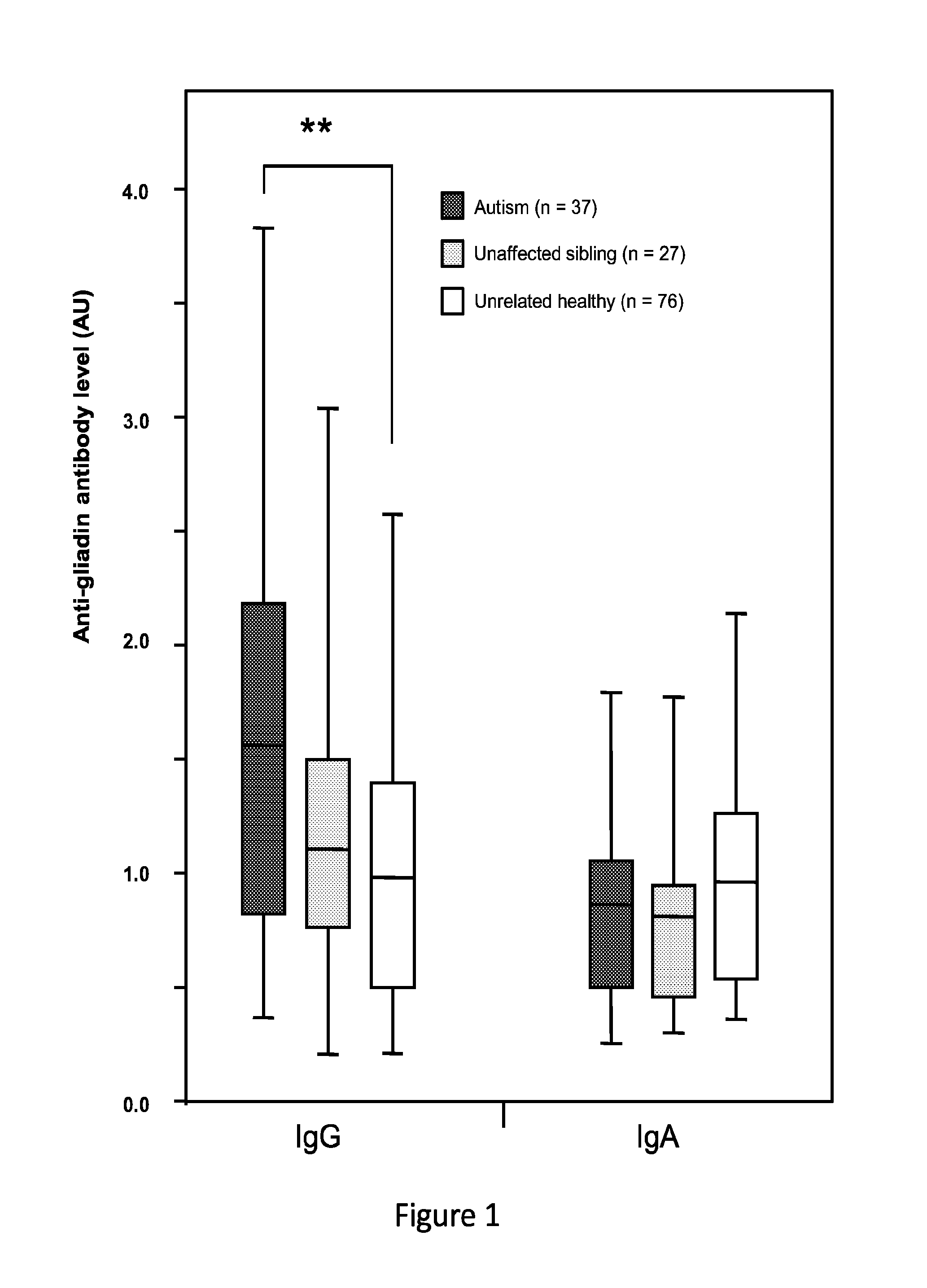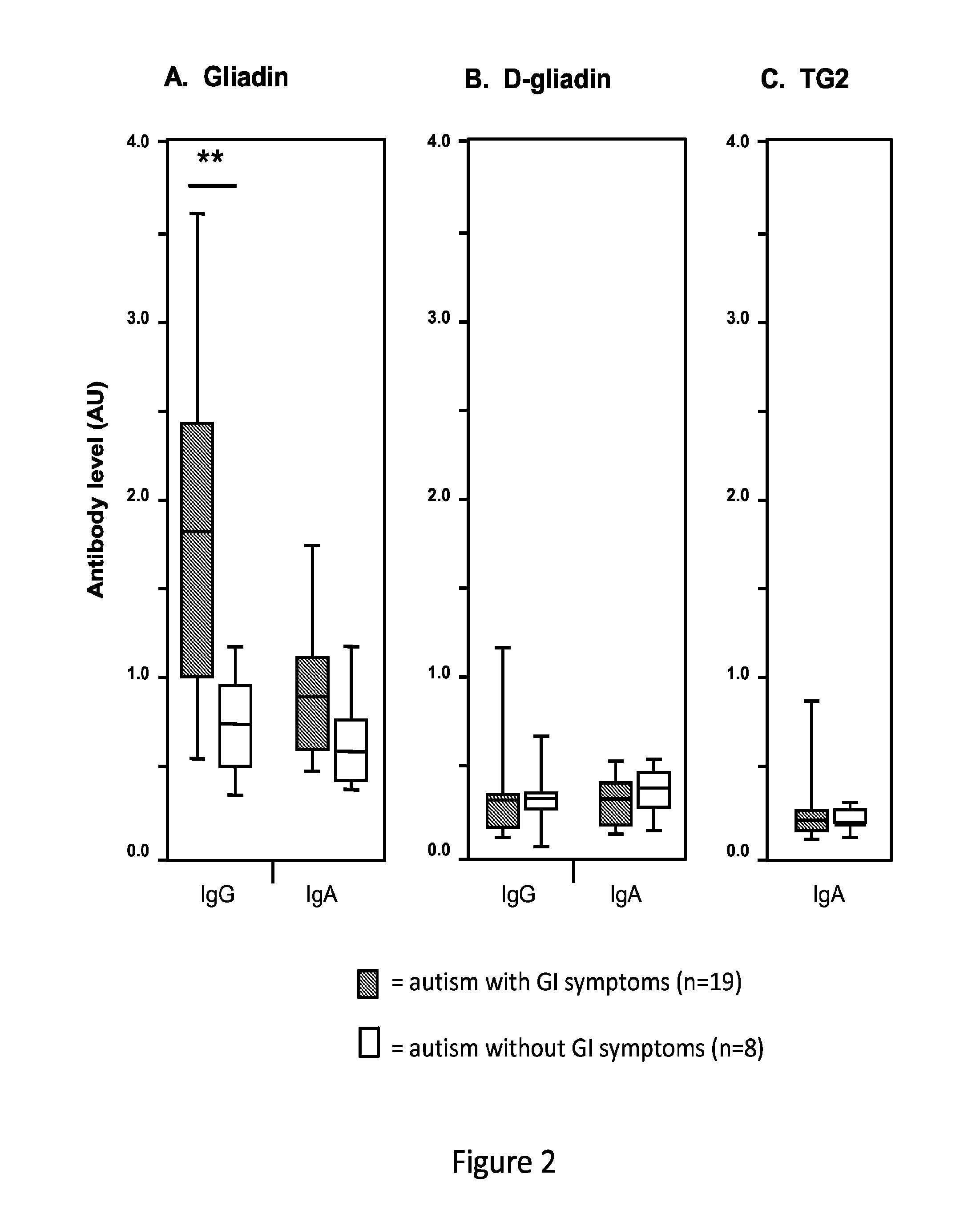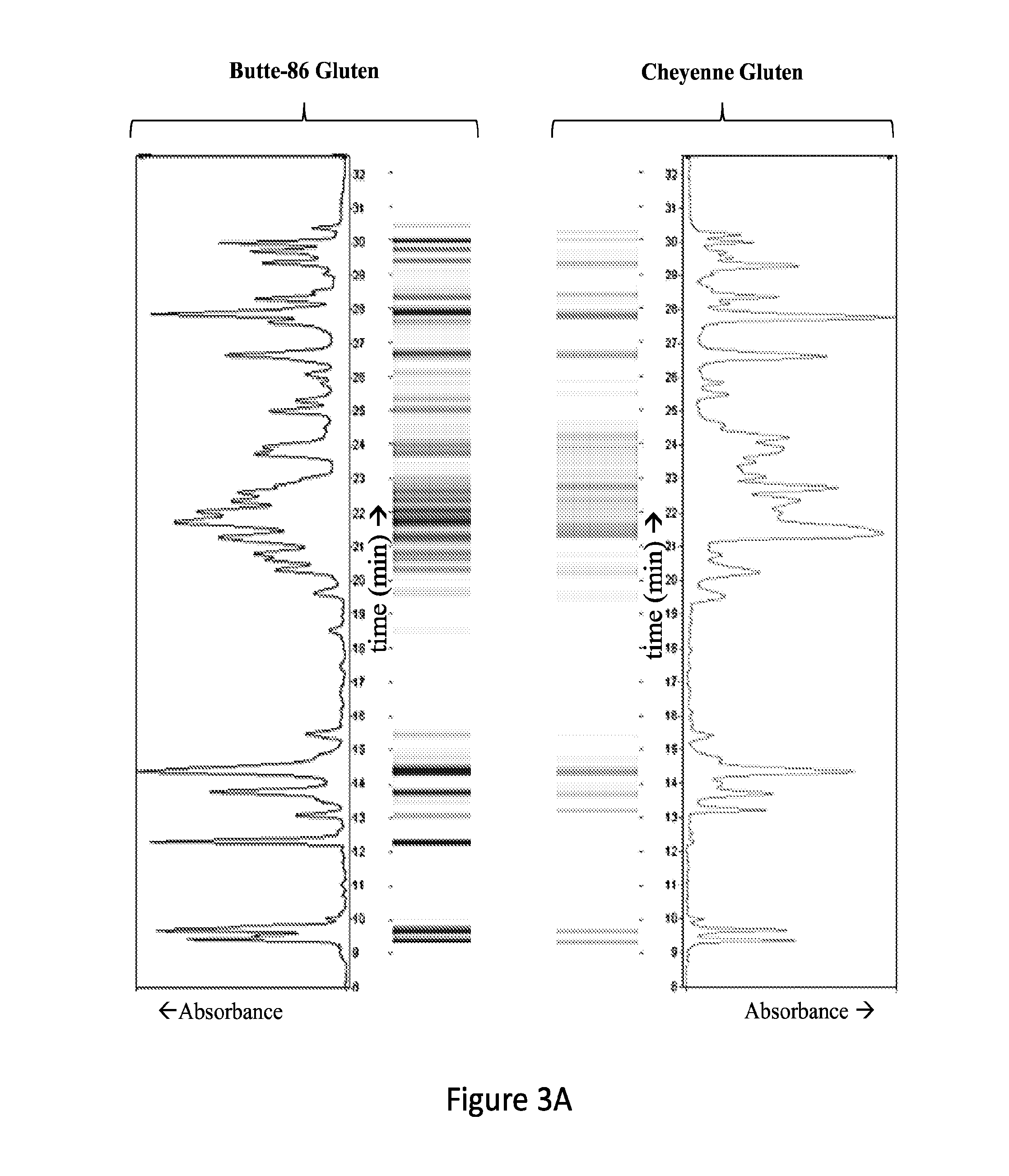Wheat proteomic microarray for biomarker discovery
a biomarker and proteomic technology, applied in the field of wheat proteomic microarray for biomarker discovery, can solve the problems of lack of specific disease biomarkers, limited information about ncgs, lack of biomarkers, etc., and achieve the effect of increasing the antibody respons
- Summary
- Abstract
- Description
- Claims
- Application Information
AI Technical Summary
Benefits of technology
Problems solved by technology
Method used
Image
Examples
example 1
Molecular Specificity of Antibody Response in Non-Celiac Gluten Sensitivity
[0039]It is hypothesized that the antibody response to gluten in NCGS patients differs significantly from celiac disease, targeting a unique set of proteins and epitopes that can be utilized to understand the disease mechanism and identify novel biomarkers of the condition. The specific aims of this example represent a systematic approach to characterizing the molecular specificity of the immune response to wheat proteins in NCGS using an innovative microarray system, as follows.
[0040]Aim 1. To Construct a Wheat Proteomic Microarray Containing the Full Set of Immunogenic Gluten and Non-Gluten Proteins.
[0041]Gluten and non-gluten proteins from two different U.S. wheat cultivars will be separated and fractionated by reversed phase HPLC and localized on functionalized glass slides in microarray format.
[0042]Aim 2. To Characterize the Molecular Specificity of the Antibody Response in NCGS.
[0043]The constructed pr...
example 2
Molecular Characterization of the Immune Response to Gluten in Schizophrenia
[0069]Preliminary data in this application demonstrate that the anti-gluten immune response in schizophrenia (SZ) differs significantly from that in celiac disease, displaying a unique antigenic specificity that is independent of the action of transglutaminase enzyme and presentation by HLA-DQ2 and -DQ8 molecules. It is hypothesized that the antibody reactivity to gluten in SZ patients targets a unique set of gluten proteins and epitopes, which can be utilized to understand the disease mechanism and identify novel biomarkers. The present example proposes a systematic approach to assess the relevance of the observed immune response to gluten in SZ patients by fully characterizing its molecular specificity using an gluten microarray system, as follows.
Characterize the Molecular Specificity of the Anti-Gluten Immune Response in Schizophrenia.
[0070]Preliminary work relied on ELISA, size exclusion chromatography,...
example 3
Gluten and Autism
[0096]In this study, markers of celiac disease and gluten sensitivity in cohorts of individuals diagnosed with autism, unaffected siblings of the patients with autism, and unrelated healthy controls were examined and compared.
Patients and Controls
[0097]The study included 140 children, including 37 with autism, 27 unaffected siblings of similar ages within the same families, and 76 unrelated healthy controls. Serum samples from individuals with autism and their siblings were acquired from the Autism Genetic Resource Exchange (AGRE). DNA samples from the 37 children with autism were also provided by AGRE. Participants in the AGRE program have been recruited primarily from the north-eastern and western United States. Affected children met the diagnostic criteria for autism based on both the Autism Diagnostic Observation Schedule (ADOS) and the Autism Diagnostic Interview, Revised (ADI-R). All available serum samples satisfying the above criteria were included. Informat...
PUM
 Login to View More
Login to View More Abstract
Description
Claims
Application Information
 Login to View More
Login to View More - Generate Ideas
- Intellectual Property
- Life Sciences
- Materials
- Tech Scout
- Unparalleled Data Quality
- Higher Quality Content
- 60% Fewer Hallucinations
Browse by: Latest US Patents, China's latest patents, Technical Efficacy Thesaurus, Application Domain, Technology Topic, Popular Technical Reports.
© 2025 PatSnap. All rights reserved.Legal|Privacy policy|Modern Slavery Act Transparency Statement|Sitemap|About US| Contact US: help@patsnap.com



